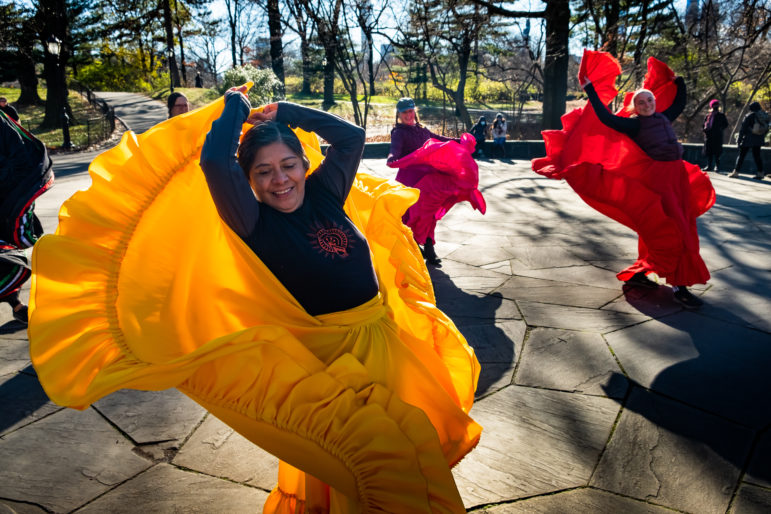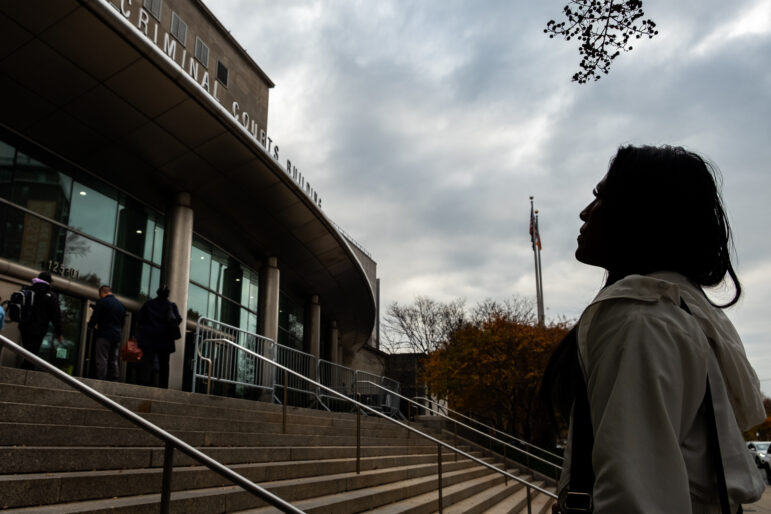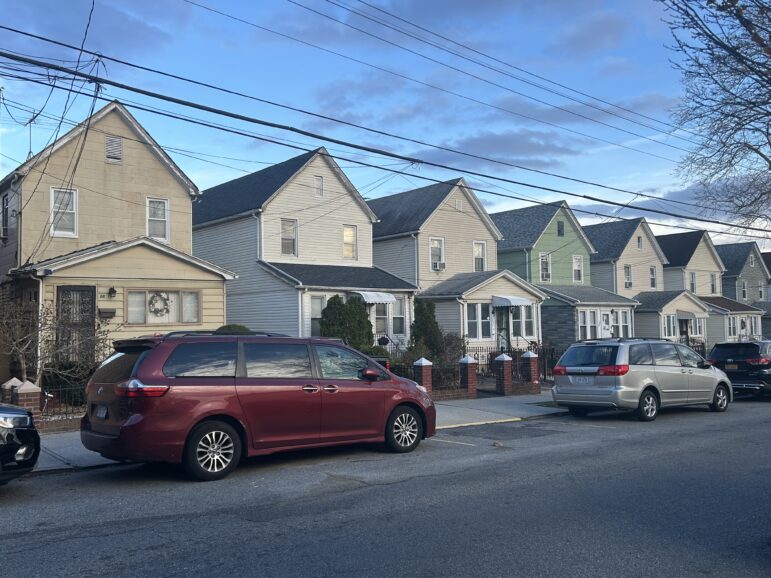
Holder Zscheyge
Back in the early 2000s, autistic children age 5-21 in New York City and elsewhere who were capable of grade level academic work were educated almost exclusively in segregated classrooms with other autistic children. Neighborhood public schools did not accept them – local schools didn’t have the resources, knowledge, training or expertise to meet these children’s needs. Research clearly shows that autistic children need to be included with typically developing children in order to reach their full potential.
In 2001, I approached District 15 Superintendent Carmen Farina and asked her “Why not? Why can’t District 15 create a fully inclusive program model to meet the academic, behavioral, social, and communication needs of autistic children?” Her answer, “Let’s form a study group.” So, for the next couple of years I collaborated with Professor Shirley Cohen of Hunter College, an expert in early childhood education for children with autism, and a group of District 15 educators to create a pilot program at PS 32. In 2004, when Carmen became the Deputy Chancellor, she replicated the ASD Nest Program across the city.
Today there are 39 New York City public schools serving over 1,000 autistic students ages 5 – 21, all of whom get the help they need to cope with the world and succeed in life. The earliest Nest cohorts are graduating from high school with Regents diplomas and are going off to college. The Nest Program is a true game-changer for children whose life prospects were previously thought to be grim.
Time to declare victory? Not yet. Why?
As the Nest program was replicated in public school after public school, in both high- and low-income neighborhoods, we noticed that there seemed to be fewer children from low-income families being identified for the program. Where were these missing children, children whose families had fewer resources and thus needed the Nest Program the most?
An obvious answer: Some children with developmental disabilities, including autism, from low-income families are not being identified early enough to receive state-funded early intervention (birth to age 3) and specialized pre-school (ages 4 and 5). Research tells us that, if they don’t get this help, they are not likely to make sufficient progress to be able to benefit from the Nest program at age five.
Why were these children not being identified earlier? My belief is that their families, faced with having to navigate numerous city and state agencies, each one a silo focused on its own mission, fall through the cracks in between the silos.
After a child is born, perhaps in a city-run hospital, they may benefit from the Nurse Family Partnership program run by the city’s Department of Health and Mental Hygiene, or DOHMH. If the family qualifies, they may receive cash assistance through the Human Resources Administration or HRA, as well as a child-care voucher from the city’s Administration for Children’s Services or ACS. An increasing number of families qualify for homeless services through the Department of Homeless Services, overseen now by HRA.
Given the need to sustain a complicated set of relationships with numerous city and state agencies, and given the vagaries of city life in general, stressed out low-income families may not know that their child has a developmental disability or how to find out if they do.
Research studies are quite clear: Early intervention really works. In New York City, if a child is found to have a developmental disability before they reach the age of three, they are eligible for Early Intervention (EI) services. At age three they transition to a special education pre-school program. Finally, at age 5, they arrive at the New York City Department of Education (DOE). The child, having received these critical services, is more likely to be able to benefit from the Nest program.
But, what happens if that child with a developmental disability hasn’t received EI and PreSchool services prior to age five? Unfortunately, such children remain developmentally far behind their peers from middle-income families. The earliest years are absolutely critical to the development of all children with developmental disabilities. Failure to receive research-based interventions in their early years dooms these children to diminished life prospects – at the age of five!
Clearly, the city needs to provide a more integrated and seamless passage for children with developmental disability through the maze of agency silos. Ideally, a single coordinating agency should develop and apply consistent, developmentally appropriate standards across the full publicly-funded early childhood continuum, beginning at birth and continuing into elementary school.
I was surprised and delighted to read the other day that the city is moving to do just that. The city is moving its EarlyLearn program, currently serving 20,000 low-income children, from ACS to the DOE.
Having worked with the DOE for over 30 years, I think that this agency is well suited for this task. My hope and expectation is that more very young low-income autistic children will be identified and then provided with the services they need. Then, when they enter kindergarten, they will be prepared to enter the Nest program and get on track for success in life.
I call this a step in the right direction.
Dorothy Siegel, MPA, is the Project Director of the ASD Nest Support Project of NYU Steinhardt.









10 thoughts on “CityViews: City is Trying to Build a Seamless System for Autistic Kids”
I really hope my son will be ready for the Nest program next year. I worry if he is not that the alternatives are not as good.
You are right to worry as the alternatives suck unless you have the resources to sue for non funded private reimbursement! I have one kid in Nest and another in a funded private. I really hope the city gets their act together and figures out how to more fairly provide resources for our kids. Right now it’s luck of the draw of you have money to sue.
The Nest program in NYC is great. However, this article is misleading. The children that central Nest (the admins there have sole discretion) admits into the program are the students who could probably “get by” in a regular ICT or zoned class. These are not the students who would be put into a self-contained special ed class. It’s unfortunate because the Nest model is fantastic it’s just that the children who really need it are routinely turned away for being “too difficult” or having too many needs. And guess where many of students ends up? In their zoned ICT class. I’ve seen it again and again. The students with ASD who need the least amount of help are put in Nest. The students with ASD who need MORE help are put into an ICT class of 25+ kids.
As for the kids with ASD who are minimally verbal or have even more needs? They are put into underfunded private “funded” schools where the teachers make less than a fast food worker. The model is NYC is not the answer as it has serious flaws.
I completely agree that this article is misleading, and it makes me angry. My child, on the spectrum, is academically/cognitively advanced, curious, socially interested, and has made tremendous progress in an inclusion setting where interactions with typical peers have been a key factor to her success. She has received early intervention services since age 2, and made great progress due to those services. But guess what? She is still working on improving behavioral issues. That’s not so uncommon for many young children on the spectrum. She was rejected from NEST because she had “too many needs” a far as behavior and was deemed not independent enough for the program. So, like you said, that might leave her in a large ICT class with a para and teachers who do not receive specific training in addressing the needs of children on the spectrum and where the issues with sensory overload would make it so that she couldn’t even benefit from the inclusive setting. Or, it leaves her in a special ed funded or nonfunded private school (which most families couldn’t even afford to pursue) which is a more restrictive setting than she needs. Both settings are not truly appropriate for her, and for many of the kids who are rejected from NEST. What my daughter needs is a small inclusion class with highly trained teachers who can support her to develop behaviorally but also foster her social emotional growth through supported peer interactions. It’s a shame that the DOE will not offer that to her and to many other children who are rejected from the program and left with unsatisfactory options.
Love Nest program. Really it’s a game changer for our son who is hight functioning and intelligent.
It’s true that too many ASD kids are underserved. My son is in Nest and definitely could not have “gotten by” in an ICT class of 30+ kids. The selection process does seem unfair. If there was a Nest in every school citywide, they would be forced to be less selective. The teachers have it pretty good with 12-15 students, most of them typically developing, 2 teachers and tons of support.
“Nest Parent,” please note that Nest IS an ICT program. Although some of the Nest strategies may be useful for kids who need a self-contained class (actually, I think many of the strategies should be used in any class, because they could be helpful to most kids), it is not designed for children who would otherwise need a self-contained class.
It saddens me to know that in the past 9-10 years that the NEST program has been introduced into the NYC DOE that low income and/or uninformed parents of high functioning ASD students whom could tremendously benefit the most from this program are still not getting an opportunity to thrive in the ideal structure that could truly meet their social, emotional, and academic needs. My twins sons whom are currently ninth graders were denied entry into NEST in Kindergarten and again in 3rd grade. One being slated as too low functioning and the other as not having ASD although we had them both privately evaluated through NYU. As a result both of my sons are no longer DOE students and attend two different privately funded schools. This has come at grave financial sacrifice to our family but worth every ounce of effort and penny. My sons have blossomed tremendously as a result of the schools they have attended over the past several years. Inclusion4All should be the next push citywide to address the unmet needs of a growing population of students that are not being properly serviced if not for persistent parents whom manage to navigate the horrendous maze of development disability services and education resources. “Silent Epidemic Tragedy” of NYC DOE!!!!
Two observations:
traditionally children from what we used to call distressed socio-economic strata are routed into ED (emotionally disturbed) classifications/systems, as opposed to ASD…
The APA really shafted everyone when they came out with the “spectrum” in the DSM – everyone except their own cohort, which can now cherry-pick the so-called high-functioning people and generate billable hours. Insurance did not cover people formerly Dx’d as having Asbergers, now it covers ASD.
Every parent I have talked to who has a child in Nest has made it clear that you have to be high functioning to be in Nest. It’s not a bad thing, it’s not a good thing, it’s just there. Although I applaud the DOE and NYU for focusing on this group I wonder why the DOE is not providing the same, focused intervention for students who are called LD? LD students make up about 35-40% of the students with IEPs. Why isn’t the DOE offering the same type of intensive and supportive environment to them?